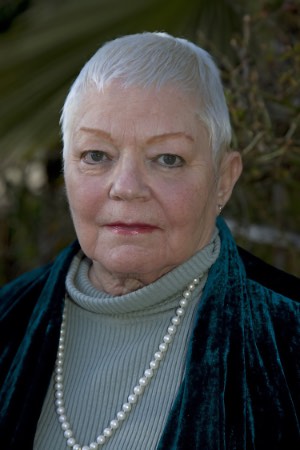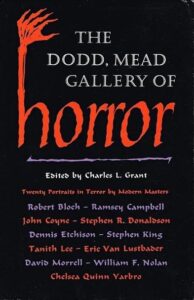
The Arrows: A Tribute to Chelsea Quinn Yarbro
Prolific author Chelsea Quinn Yarbro died on August 31 of this year. She left a literary legacy that exceeded 80 books in a variety of genres. In the horror field she was best known for the St. Germain series, which began in 1978, featuring the eponymous legendary vampire. St. Germain’s exploits ended in 2014, with Sustenance, a collection of novellas and short stories. A nice lengthy run for the fictional 4,000-year-old vampire, who the author resurrected almost on an annual basis. Yarbro was well versed in many subjects, as I discovered firsthand during a conversation with her at a convention several years ago, and was adept at writing in the short form as well as novels and novelizations. As a fixture in horror fiction for so many years, Yarbro, born in 1942, left behind an enormous body of work. This made it difficult to choose how best to pay tribute. I eventually zeroed in on a few short stories, before settling on “The Arrows.”

“The Arrows” struck me as an appropriate way to honor someone for whom artistic expression was a way of life. The narrative concerns an artist who is mired in insecurity. He is stymied while attempting to paint a portrait of the martyred Saint Sebastian. Sebastian is a ubiquitous subject in the realm of the arts, depicted by many of the great masters as a beautiful man with a sinuous body that is riddled by arrows. The protagonist’s sequence of harrowing acts of creation mirror Sebastian’s suffering. A sacrifice for one’s art inevitably takes place. During the frustrating creative process, the artist searches for culpability: “Was it the color? Was that the problem? With the light so glaring and hot, had it changed his perceptions so that he could not see as clearly as he needed to? Was the glare from the windows so strong that he was no longer able to weigh the hue and value of his paints? Would a stronger shade of red have more impact? Did he have to make the flesh a pastier shade, suggesting Sebastian was in deep shock? Was that what was lacking? Had he been misled by the angle at which he had to paint so that he had unintentionally distorted the work? Or was it something deeper, something more profound? Was it a failure not of canvas and paint, of the medium, but himself as an artist?”
Depriving himself of food in order to pay for his art supplies, the painter becomes increasingly removed from socializing and the mundane world. Unkempt because the cost of razor blades is economically prohibitive, and in arrears with his rent, the focus on the painting turns into desperation: “Night engulfed him, leaving him feeling empty and without form. He could not say what he was anymore, with the color gone from him and his world sunk into darkness. Idly he felt for his pulse, and was mildly surprised to feel it beat. Under his hand his chest rose for breath; he was still alive, but he no longer believed it, not when there was so much night around him.” How beautifully Yarbro conveys the depths of despair in that passage.
Unable to detach from his art, the artist embraces what he deems necessary to fulfill his goal and make a statement: “He would show what art was, not this insignificant imitation that had masqueraded as art for so long.” The artistic torment renders a resolution.
Originally published in the 1983 anthology The Dodd, Mead Gallery of Horror edited by Charles Grant, “The Arrows” illustrates how well Yarbro grasped that creativity can come with a price, and how the rewards can be beyond one’s dreams—or nightmares. Chelsea Quinn Yarbro was the recipient of the Grand Master Award from the World Horror Association, and garnered Lifetime Achievement Awards from both the World Fantasy Convention and Horror Writers Association; she served as the HWA’s first female president. Truly one of a kind, she is deeply missed.
